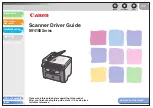
Page 75 of 79
Technical Documentation and
User Instructions
Laser Mirror Scanner LMS-Q280i
6.6 Errors and Error Handling
The Scanner knows 4 different types of errors:
Fatal Errors
Standard Errors with Requested User Intervention
Standard Errors
Warnings
After power up the system checks and prepares several internal hardware
components. Errors are pushed onto an internal error stack. Therefore it can
happen that more than 1 error is reported.
A
fatal error
causes a lock of measurement and in programming mode only few
commands are available (e.g. .HELP, .ERR, Q ). The laser is switched off. Fatal
error messages always start with “FATAL:”
A
standard error
causes a lock of measurement, but programming mode is
available. Standard error messages always start with “ERROR:”
A
standard error with requested user intervention
like a standard error
locks the measurement; programming mode is available and error messages
start with “ERROR:”. These types of error need a user intervention, e.g. with a
“high temperature error” the instrument must be cooled down or with a “low
voltage error” the power supply voltage must be increased (perhaps battery
changed).
Warnings
are reported, but measurement can be (or is) continued. Warning
messages always start with “WRNG:”
Errors occurred are pending until they are acknowledged with command
“
ERRACK
”. When errors are acknowledged, measurement can be continued.
Fatal errors can not be acknowledged.
In measurement mode errors are reported automatically as messages (e.g.
“mERROR:LOW_BAT”) . In programming mode an error is indicated by an
exclamation mark added to the reply string before the carriage return. To get
the error message, the command “.ERR” must be sent to receive a list of errors
occurred:
Example:
Command
Reply
Meaning
W<Cr>
*W!
An error occurred
.ERR
\FATAL:FLASH_RW
=ERR






































